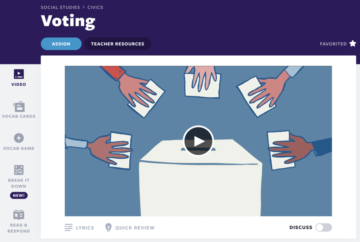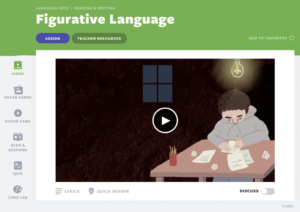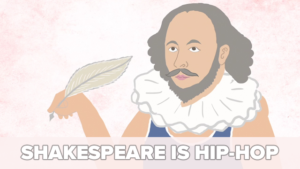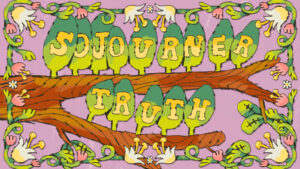Representation matters, whether it’s in a big Hollywood blockbuster or a classroom. Flocabulary’s lessons are shown to students all over the world, which is why diversity, equity, and inclusion (DEI) is a priority in our content. We hope to support every student’s identity by creating content students can see themselves represented in.
We love when educators share their students’ excitement with how we portray diversity, equity, and inclusion in our lessons. Check out this story that MC Educator Andrea Runnels posted in our Facebook Group:

While representation and diversity, equity, and inclusion are all key parts of our creative process, we recognize that we can always do better. That’s why we’ve worked with third-party organizations to audit our content to identify areas of improvement.
Here are a few of the ways we review our content in order to ensure that we are representing the diverse student body we serve.
Auditing our content
NewSchools Venture Fund
Audits of content are important because they not only impact existing lessons, but also assist in the creation of new ones. In 2015, NewSchools Venture Fund reviewed our science lessons and determined that the characters represented a range of ethnicities and ages, but only the able-bodied. They also saw that only a small percentage of the lessons featured female soloists.
Now, we have included characters with different abilities across all subjects, including our social and emotional lesson, Diversity. We have also featured female soloists in more lessons, like Earth’s History with the artist, Sammus, or Allusions with Latasha.

Our internal process
After spending time writing and editing your own essay, it becomes harder to see the mistakes and have an objective eye. This can happen during the creative process at Flocabulary, too, and we strive to have several people view our videos before we put them on the website. We do this in order to be inclusive and equitable and eliminate as many mistakes as possible.
We created a “Historical Figures” topic area under our social studies section, with some existing lessons as well as lessons currently in development. Through grouping our biographical units altogether, we realized that we were doing a good job representing different genders and ages, but don’t have any Asian or Asian-American figures listed. We’re working to increase that representation in our next batch of lessons.

Our lessons go through a lot of changes before they go live to the public. We often have to go back and modify illustrations in order to provide more diversity and representation. Most of these modifications come from organic suggestions from our internal team, but we also fix videos based on our user feedback when needed.
For our Hyperbole lesson, we wanted to represent the song’s rapper, Sammus, as the character. In the first iteration, her skin was drawn lighter than it is in real life. So we changed it. Check out the various iterations below.

We’re committed to expanding representation in all Flocabulary videos, and want to be transparent with our viewers about how we approach diversity, equity, and inclusion in our content. If you ever have feedback for us, just let us know.
- All
- AREA
- artist
- audit
- body
- content
- Creating
- Creative
- Development
- Diversity
- equity
- expanding
- eye
- featured
- First
- Fix
- fund
- good
- Hollywood
- How
- HTTPS
- identify
- Identity
- Impact
- Including
- inclusion
- Increase
- IT
- Job
- Key
- love
- Matters
- order
- People
- public
- range
- review
- Science
- Share
- Skin
- small
- So
- Social
- Spending
- Student
- studies
- support
- time
- us
- venture
- VENTURE FUND
- Videos
- View
- Website
- world
- writing









